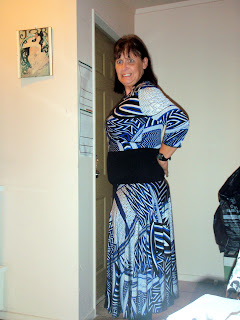One of my commitments for 2013 was to use some of
my handmade items as gifts this year. I suffer
from an odd idea that handmade presents are somehow second best. Last Christmas I gave my mother a jacket that
I had made for her. Her delight,
combined with my sister’s envy convinced me that it was actually Ok to sew
presents for people. Far from regarding them
as second best, people often feel especially pleased that I have spent the time
making something for them, rather than popped out at lunch time and grabbed
something from the mall. I often think it would be nice to offer friends and
family something that I have made myself, but then don’t get my s**t together
in time to actually have a present in time.
This year I’m going to start a “Gift Stash”. I will make stuff that can be given as
presents without specific recipients in mind.
Hopefully when an occasion arrives I will be able to reach into the
stash and pull out a handmade present.
My first offerings for the Gift Stash are kitchen
items – oven mitts and gloves with matching T-Towels. I didn’t actually make the T-towels, but I
got a set of machine embroidery files from Urban Threads and stitched one of
the designs on a pair of cheap T towels. The rest of the items were made from
Calico and Thinsulate tm, a wading specifically sold for its
insulating properties. I designed them
myself, and fully lined the glove and the main portion of the mitts with calico
that was quilted with the Thinsulate tm, so the areas that are
between the user and hot pans are all double layers of insulation. I used the embroidery as the quilting. The layers are too thick to fix into the
machine hoops, so I used bulldog clips to hold the fabric and wadding on to the
lower hoop.
For the gloves, I made four pieces for each glove,
sewing them into two gloves, then putting one inside the other as a lining, and
stitching them together at the wrist before finishing off the edge with black
bias binding (made with the bias binding maker) made from black calico.
The mitts are two long oval shapes quilted with
the Thinsulate tm, then two extra pieces for the ends. I didn’t use Thinsulate tm to
quilt these pieces as I don’t envisage these pieces being used to protect the
user. I then bound all the pieces
together with more black calico bias binding.
I’m actually very pleased with this collection,
and love the designs. I will be quite
proud to give these away. Am I alone in feeling a bit iffy about giving home made presents?
























































